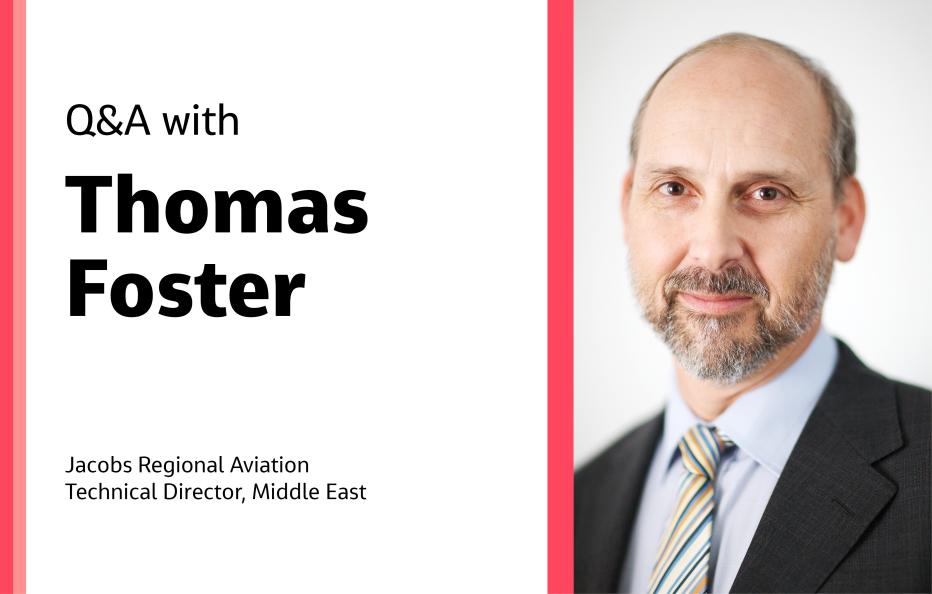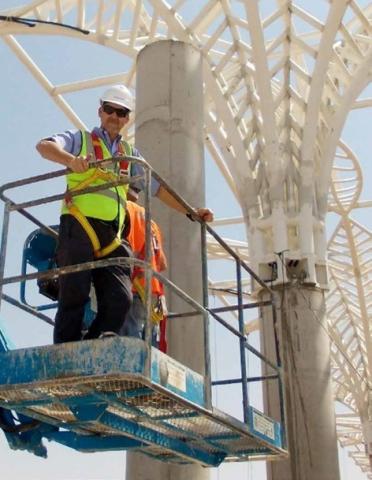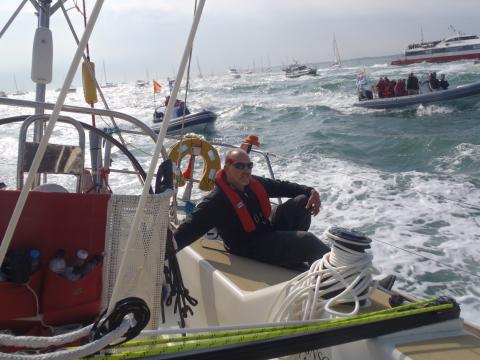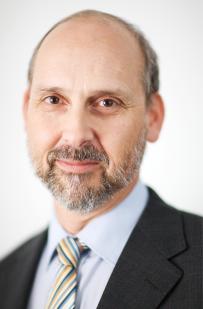
Our Regional Aviation Technical Director for the Middle East, Thomas Foster, is a highly experienced aviation technical leader.
With over 40 years honing his craft, he has delivered unique solutions to clients across world. Today, he is dedicated to driving innovation throughout the Middle East region and encourages teams to challenge conventional norms and bring innovative solutions to our aviation clients.
We spoke to Tom to understand the evolution of the aviation industry in the Middle East over the past few years, what key factors have contributed to its rapid growth and development and some of the upcoming aviation infrastructure developments and upgrades in the region.
Hi Tom! With over 40 years in aviation, can you tell us about your career background and current role at Jacobs?
I joined Jacobs (then Halcrow) in 1977 after studying engineering at Cambridge University. I started my graduate engineering experience designing ports and building structures for the United Arab Emirates (UAE) and the Kingdom of Saudi Arabia (KSA). After some years in the United Kingdom (U.K.) conserving and upgrading the original Wembley Stadium, I moved into aviation by designing hangars in the Middle East. From 1993, I focused more on planning and designing airport infrastructure and support buildings, which led to managing the aviation business and being the design manager and project director for the northern runway at Abu Dhabi. After competing in a round-the-world yacht race sabbatical, I returned to KSA to work as an independent engineer for the expansion of the airfield and new terminal in Madinah.
I was appointed technical director with Jacobs after successful completion of the Madinah project on schedule in 2015. As the technical director, I led various projects in India, UAE and KSA and also had the opportunity to expand the regional team. Amid the COVID-19 pandemic, we were fortunate enough to focus our efforts on a naval air station project in India when the aviation industry elsewhere was facing a downturn.
How has the aviation industry in the Middle East evolved over the past few years and what key factors have contributed to its rapid growth and development?
The national investments and success of home-based airlines in the Gulf region surged between 2000 and 2015, driven by the development in tourism and the growing propensity to fly by Gulf residents and expats. The air traffic growth was boosted by low-cost airlines offering affordable prices. Not only did Emirates, Qatar Airways and Etihad, with their wide-body fleets, experience growth, but the success of Air Arabia and Al Jazeera also contributed to regional traffic growth. Air Arabia played a significant role in transforming Sharjah International Airport from being a cargo-dominated airport to becoming the home of one of the UAE's leading carriers.
What are the upcoming infrastructure developments or upgrades in the Kingdom of Saudi Arabia aimed at improving airport capacity, passenger comfort and operational efficiency?
Passenger traffic in Saudi Arabia has grown for different reasons from the Gulf states in the last decade. Allowing for the COVID-19 dip, the traffic in Saudi Arabia has grown relatively modestly based on solid domestic and pilgrim demand. In the coming decade, Saudi Arabia is expected to experience a surge in air traffic from multiple sources. These include investments in Riyadh Air and NEOM Air, which will increase transfer operations in Riyadh. Additionally, incoming tourism traffic is expected to rise, particularly to resorts such as Red Sea International, Amaala and AlUla. Finally, there is an increasing propensity among the Saudi population to fly.
New aviation infrastructure will be planned around operational efficiency and passenger comfort, providing a competitive edge over the Gulf hubs. Low turnaround times and innovative technologies built into the new facilities will help improve efficiency and keep down operating costs. The vision of the new terminals will be an attractive destination and will spark interest in the transfer market to experience the best that the world can offer.
What steps can we take to ensure that new airports and expansion projects integrate smoothly with existing aviation facilities and services?
We have worked on new airport projects in the Middle East and India, such as the Red Sea International Airport and Navi Mumbai International Airport. These projects often come with challenges, particularly when it comes to integrating with existing airspace that has been allocated for many years. It is crucial to involve the airspace regulator and military authorities during the early stages of airport planning. Airlines and cargo operators need feasible early routes when new airports are established. This requires the support and commitment of airline stakeholders during the planning process.
Most projects require the expansion of existing facilities where a complete understanding of the current operations on the ground is also vital. Providing a smooth integration requires building some new facilities and capacity headroom in the short term so that existing facilities can be partially closed and extended.
“Aviation is under scrutiny for its impact on global warming – particularly the development of new airports. We all are responsible for developing more sustainable solutions in infrastructure development.”
The region has experienced significant growth in air traffic over the years. How can air traffic management be improved in congested airspace and busy airports?
Growth in aviation can’t just be limited to visible infrastructure development; it also requires complementary growth in airspace management. However, the rapid growth of physical infrastructure tends to outpace the changes necessary to support the growth. In order to prepare for the future, many countries require an airspace modernization program similar to the one implemented in the U.K. Upgrades to both airspace and airport infrastructure should be planned concurrently.
How do you stay updated on the latest regulations and developments in the aviation industry?
Jacobs delivers support to airport operators, airlines and stakeholder groups, scaled to meet every need. We must stay updated on the latest regulations and developments within the industry and the region to do this. At Jacobs, we have Communities of Practice, such as airport planning and airfield engineering, bringing together professionals from the Middle East and other regions for quarterly sessions. The group shares regulatory updates, industry event information and fun, geeky quizzes. We also exchange stories about our favorite projects. It's a fantastic network to keep up with the latest developments in the industry and connect with like-minded individuals.
Tell us about a project you’ve participated in that you’re especially proud of.
Between 2012 and 2015, I was proud to be associated with the delivery of the Phase 1 implementation of the public-private partnership (PPP) project at Madinah Airport. This comprised a new 1.6 million square feet (150,000 square meter) passenger terminal, specific facilities for Hajj and Umrah pilgrims, new aprons and a phased airfield expansion.
The Madinah Airport PPP project is credited with being the first PPP airport concession in Saudi Arabia. The Phase 1 expansion was the first airport terminal in KSA to be awarded a LEED Gold Certificate.
As the on-site representative of the independent engineer, my role was to monitor construction compliance with the design. The relocation of the operation to the new terminal was successfully achieved on time in 2015.
Can you tell us how the work you do is helping solve our clients' biggest challenges?
Aviation is under scrutiny for its impact on global warming – particularly the development of new airports. We all are responsible for developing more sustainable solutions in infrastructure development. At Jacobs, as a purpose-led company, we know we have a pivotal role to play in addressing the climate emergency. We consider this not only good business but our duty to channel our technology-enabled expertise and capabilities towards benefiting people and the planet. We are developing new specifications to respond to climate change. Due to the sheer size of the aviation projects in the Middle East, the impact will be enormous.
If you weren't in the office, what would we find you doing?
In the second part of my sabbatical year, after participating in a round-the-world yacht race, I became a part-time cruising instructor teaching people how to navigate and be a safe skipper of a small yacht. Now, I can be found as skipper of the boat that lays the racing marks, but I still find myself teaching people the safety basics of big boat sailing and passing on lessons learned.
What do you love most about your job and working here at #OurJacobs?
I absolutely love the opportunity to develop and lead a team of airport and airfield experts in the Middle East while working on and delivering amazing projects here at Jacobs. The challenges and complexities of aviation projects make it exciting to watch my team grow and excel in their roles.
-

Tom Foster poses with the Madinah Terminal Roof Trees
-

Tom Foster steering the best line at the Clipper Race start August 2011
About the interviewee

Thomas Foster is an airport infrastructure specialist with over 40 years of experience in management, planning, civil and structural design of major infrastructure projects in the Middle East and the U.K. Tom was the design manager and project director for the new Northern Runway in Abu Dhabi, with experience in designing and managing the construction of airport facilities such as airfields, terminal buildings and hangars.
Tom was the Independent Engineer’s senior site representative at Madinah Airport – Phase 1. He has been the project director and manager for airport planning and infrastructure projects in the Middle East and India, including Navi Mumbai, Abu Dhabi, Sharjah and Muscat.
Join #OurJacobs team
What drives you drives us as we work to build a better world – together. At Jacobs, every day is an opportunity to make the world better, more connected, more sustainable. We’re always looking for dynamic and engaged people to join our team. Bring your passion, your ingenuity and your vision.













































